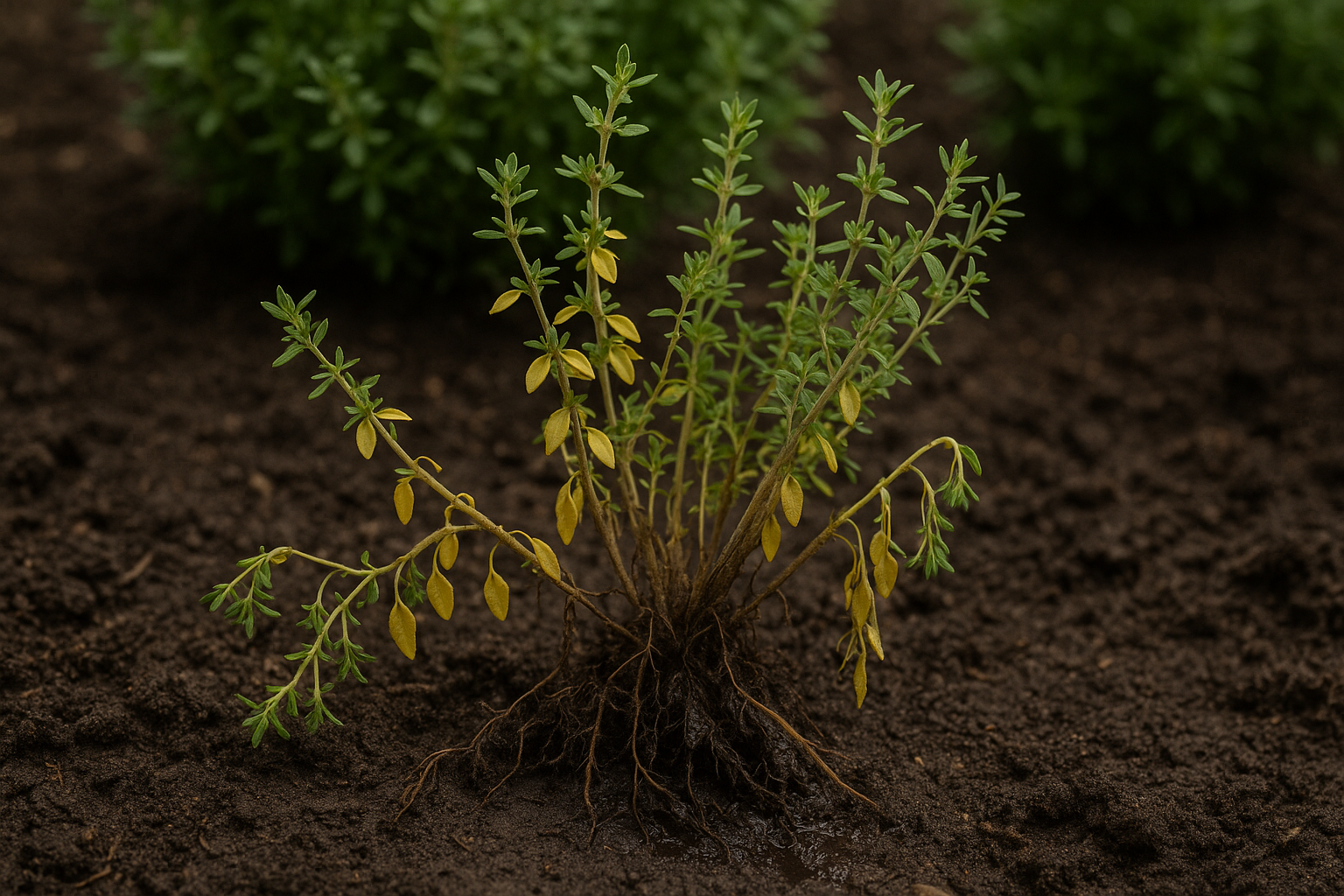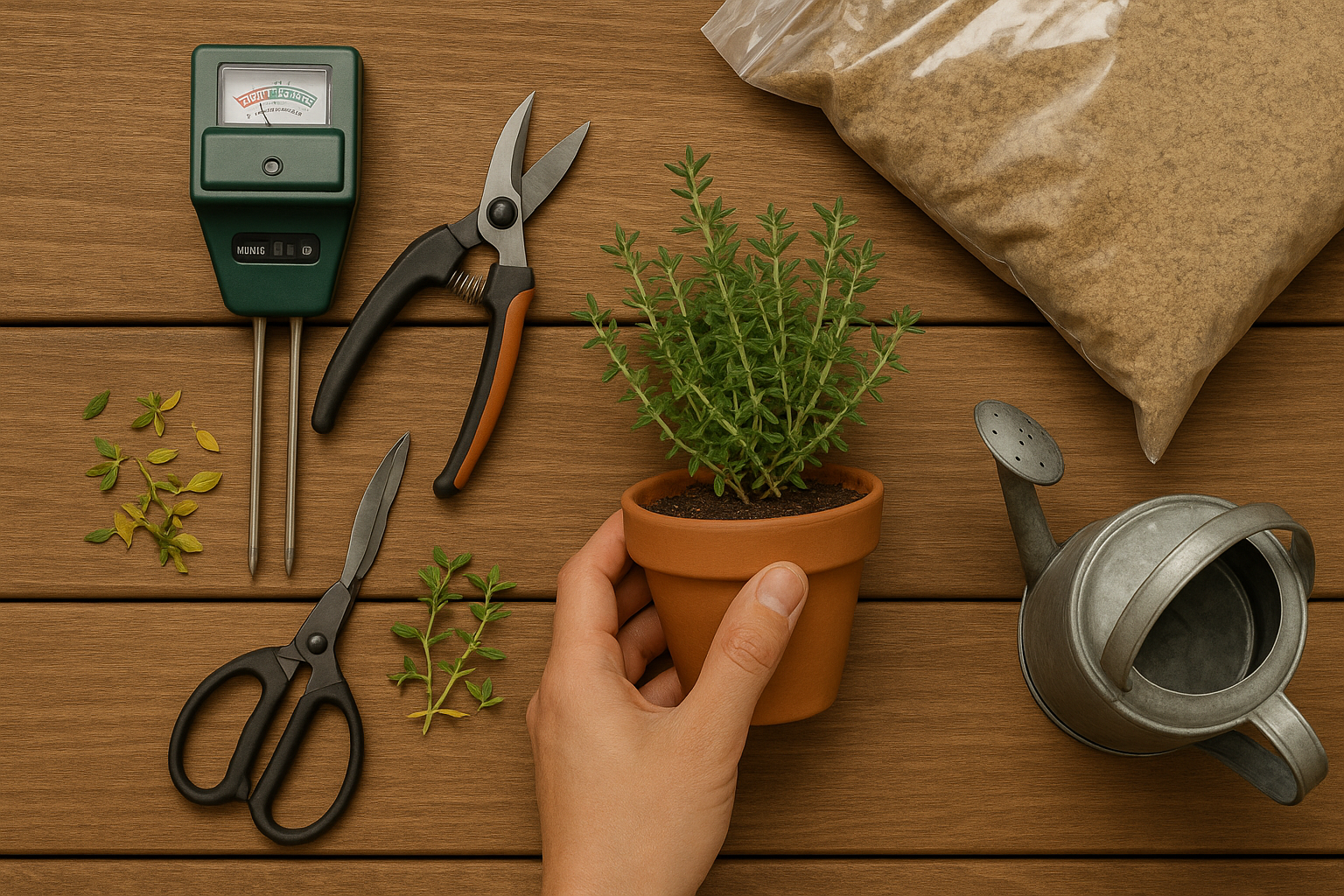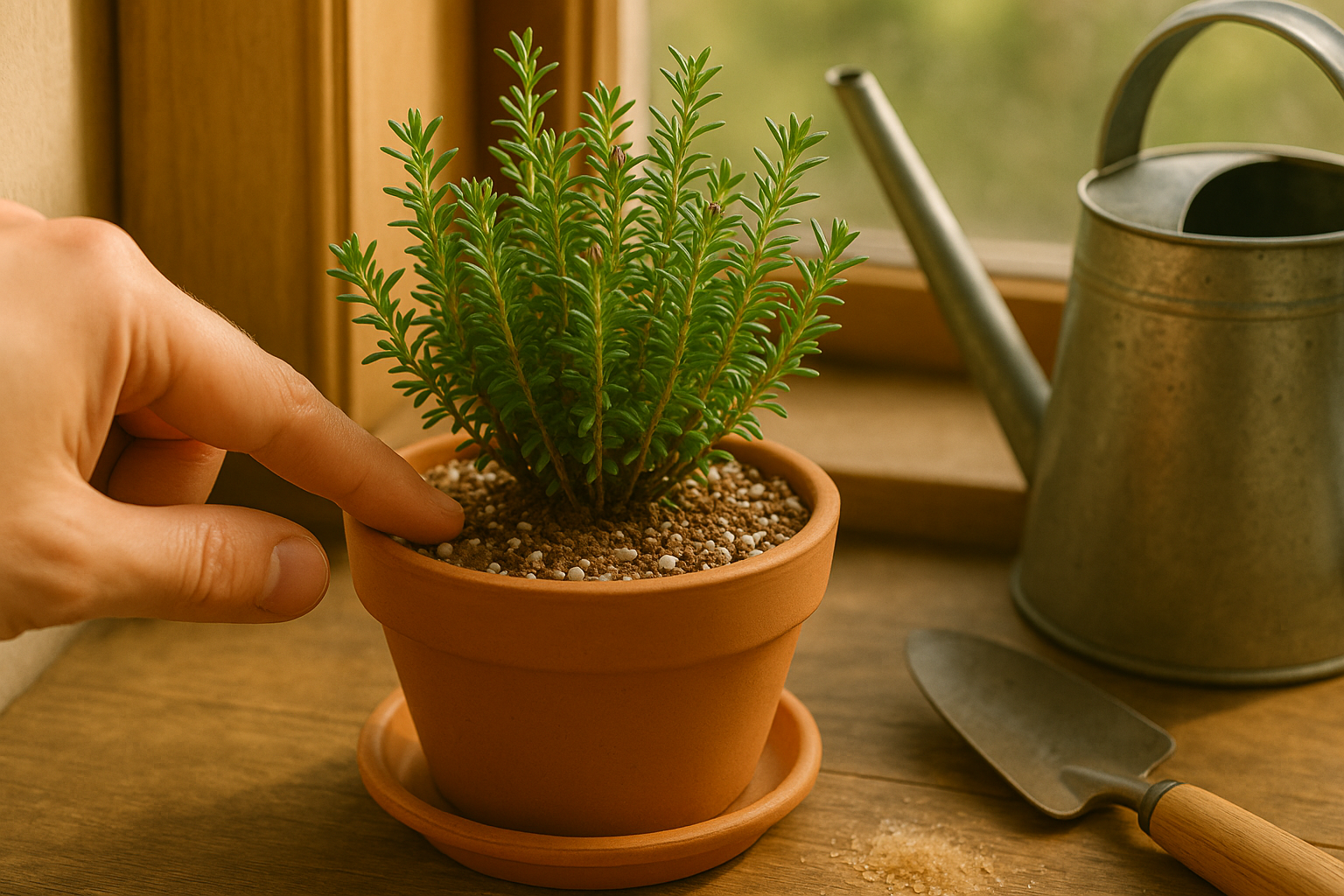Understanding Thyme’s Water Needs
Thyme is a resilient Mediterranean herb, loved for its fragrant leaves and adaptability. However, getting its watering just right is key to healthy growth. Unlike thirstier plants, thyme prefers moderate watering—too much can cause root rot, while too little leads to dry, stunted leaves.
The trick is to water only when the top inch of soil feels dry, whether your thyme is growing in a pot on a windowsill or directly in garden soil. Potted thyme tends to dry out faster than garden-planted thyme, so it often needs to be checked and watered more frequently, especially during hot weather.
Your local climate also affects watering needs. If you live in a humid or rainy area, you’ll likely need to water less. Conversely, gardeners in dry, windy, or very sunny locations should watch soil moisture more closely.
Soil composition plays a big role too. Sandy, well-drained soil is ideal because dense or compacted soil holds water, increasing the risk of root rot. When possible, add sand or perlite to heavy soils to improve drainage.
By keeping these factors in mind, you’ll help your thyme thrive and reduce the risk of stress and common health issues like yellowing leaves or wilting stems.
Signs of Overwatered Thyme

When thyme is overwatered, you’ll often notice its leaves turning yellow—a classic red flag that the roots are struggling to function. This yellowing usually starts at the base of the plant and spreads upward as the excess moisture makes it hard for thyme’s roots to breathe and absorb nutrients.
Another telltale sign is wilted, limp stems and leaves—even though the soil still feels damp to the touch. Unlike thirsty plants that perk up after a drink, overwatered thyme remains droopy and tired-looking, signaling it’s suffocating rather than thirsty.
Root rot is also a serious risk; if you gently pull up the plant, you might find the roots are dark, mushy, or even smell rotten. This condition sets in when water pools around the roots for too long, encouraging harmful fungi to take over.
Thyme is naturally adapted to dry, Mediterranean environments, so it’s particularly sensitive to soggy conditions. Its roots expect quick-draining soil—not soggy pots or garden beds.
Overwatering usually happens when we stick to a rigid watering schedule or fail to adjust for weather, giving our thyme a drink even after rainfall or when the soil hasn’t dried out. Another common culprit is poor drainage: without enough holes in your pot or heavy, compacted soil in garden beds, water can’t escape and accumulates around the roots.
To avoid these issues, always let the soil dry out between waterings, use sandy or gritty soil mixes, and make sure your pots or planting spots drain well. This will keep your thyme healthy and thriving.
Signs of Underwatered Thyme
Underwatered thyme reveals itself through several clear signs, making it easier to spot the problem before the plant experiences too much stress. First, check the leaves: if you notice they are dry, crispy, or turning brown around the edges, it’s a classic sign of dehydration. Brittle or curling leaves are another giveaway that your thyme isn’t getting enough moisture.
You may also see an increase in leaf drop, where otherwise healthy-looking leaves start falling off with the slightest touch. While thyme is known for being drought-tolerant and can survive short spells without water, prolonged neglect can have more severe consequences.
Chronic underwatering slows growth significantly, so if your thyme appears stunted or hasn’t put on any new leaves in weeks, inadequate watering could be the culprit. It’s important to differentiate these symptoms from temporary wilting, which might happen on a hot day but usually resolves quickly if you water the plant.
With ongoing water stress, however, the plant fails to perk up even after watering, and over time, the woodier parts of the plant may look faded and less robust. Keep an eye out for the soil too—if it’s pulling away from the sides of the pot or feels bone dry several inches down, underwatering has likely set in.
Rescue your thyme by thoroughly soaking the soil and then letting it dry out somewhat before the next watering, mimicking the natural Mediterranean conditions thyme loves.
How to Diagnose and Fix Watering Issues

Diagnosing watering problems starts with checking both your plant and its soil. Gently press your finger about an inch into the soil; if it feels soggy and you notice yellowing, mushy leaves or stems, your plant is likely overwatered. Conversely, dry, hard soil combined with wilting or crispy, browning leaf edges is a classic sign of underwatering.
If you suspect overwatering, allow the soil to dry out before watering again, and make sure your pots have drainage holes to prevent water from pooling. If root rot is present—which you can spot by black, mushy roots with a foul odor—consider repotting the plant with fresh, well-draining soil.
For underwatered plants, start by watering thoroughly until excess drains from the bottom. Then, stick to a consistent watering schedule based on your plant type’s needs—usually when the top inch of soil feels dry. Also, prune away any yellow or brown, shriveled leaves so your plant can focus energy on healthy growth.
After you’ve taken action, keep a close eye on soil moisture by checking it regularly, and watch for new leaf growth, improved leaf color, and overall perkiness. Adjust your watering if recovery seems slow or symptoms persist. Using a moisture meter or setting reminders on your phone can help you build a good routine and catch problems early, ensuring your plant bounces back and stays healthy.
Preventing Watering Problems
To keep thyme thriving, understanding the right watering routine is essential, and it varies by season and whether your plant is in the ground or a pot. In warmer months, thyme needs water about once a week if it’s planted in a garden, but pots may dry out faster and require checking every few days.
In cooler seasons or during rainy spells, cut back—overwatering is far more harmful than letting thyme dry out a little. Well-draining soil like sandy loam is ideal, as thyme hates “wet feet.”
If potting, always choose a container with ample drainage holes to prevent excess moisture buildup at the roots; adding a thin layer of gravel or small stones at the bottom also helps.
To avoid guesswork, invest in a basic moisture meter or simply stick your finger about an inch into the soil—if it feels dry, it’s time to water. These small habits prevent root rot and keep your thyme healthy, vibrant, and full of flavor for your kitchen creations.
Special Cases
Thyme grown in pots and thyme planted directly in the ground have surprisingly different watering needs. Potted thyme dries out much faster because container soil is more exposed to sun and wind, especially if the pot is small or made of a porous material like terracotta. Smaller pots need to be checked daily in hot weather since their limited volume dries out quickly.
On the other hand, thyme growing in the ground benefits from deeper roots and a larger, more stable reservoir of moisture, so it usually only needs watering during long dry spells. The type of potting soil you use also matters: a gritty, well-draining mix helps prevent soggy roots in both cases, but pots should never be filled with heavy garden soil, which retains too much moisture.
In summer, expect to water potted thyme once or even twice a week—or more during heatwaves—while thyme in the ground may not need extra water at all. In winter, scale back watering for both, especially for pots, since cooler temperatures and lower sunlight mean less evaporation. If you overwinter potted thyme outdoors, consider moving the containers to a sheltered spot and keep the soil just barely moist to avoid root rot.
With a watchful eye and a fingertip test of soil moisture, thriving thyme is within reach regardless of where it grows.
Frequently Asked Questions on Thyme Watering
Many new thyme growers wonder how often they should water this popular herb, especially in summer. Contrary to common belief, while thyme is drought-tolerant, it still needs consistent yet moderate moisture to thrive—especially in hot weather.
During summer, water thyme in garden beds about once a week if there hasn’t been rainfall, and more frequently (every 3–5 days) for potted plants since pots dry out faster. Avoid soaking—let the top inch of soil dry before the next watering.
If you slip up and the plant suffers root rot from overwatering, act fast: gently unpot the thyme, trim away blackened, mushy roots, and repot in dry, well-draining soil. Don’t fall for the “set-and-forget” myth—thyme may suffer if left untended during dry spells.
For beginners, check daily by sticking a finger in the soil; if it feels dry at your fingertip, it’s time to water. Wilting, yellow leaves, or a musty smell could mean too much water. Mulching with light gravel also helps retain moisture without smothering the roots.
Remember, success with thyme comes down to finding the right balance—too much or too little water are both common beginner mistakes, but an attentive eye will quickly correct them.
